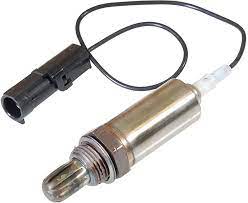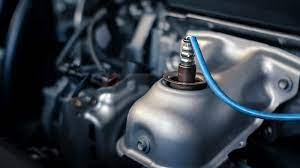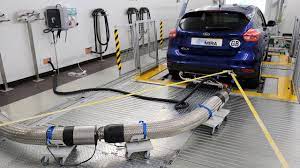What Are the Signs of a Bad O2 Sensor & How Do You Fix It?
In this article we will be looking at oxygen (O2) sensors to explain what they do, how we can tell if they are broken and how much it will cost us to fix the problem. Non-functioning O2 sensors can cause our engines to run poorly so it is important to make sure that they are in working order.
What Does an O2 Sensor Do?
The internal combustion engine relies on a series of continuous ignitions inside the cylinders of our engines. Each one of these ignitions consists of fuel, air, compression and a spark. With each tiny explosion in the engine exhaust gases are created which must escape the engine via the aptly named exhaust system.
In the exhaust gases you will find among other things oxygen and carbon. It is these two that oxygen sensors monitor and they do so as the gases leave the car's motor. The amount of oxygen is measured by the sensors and used to make adjustments.

Information relating to the oxygen on the exhaust gases is passed by the O2 sensor to the vehicle's Electronic Control Module (ECM). This is essentially the engine's brain so once it has an O2 reading it will make changes to the way the engine is running.
One of the main things the ECM will do is adjust the fuel mixture to match the requirements of the engine. This may include adding or subtracting fuel from the mix to create the most efficient combustion conditions.
When the O2 sensor sends bad information or no information at all the ECM can not get the right fuel to air mixture and this can cause poor engine performance. When engines are not running at their best they can start to become damaged potentially breaking other parts which may be expensive to replace.
Where Are the O2 Sensors?
Depending on your car you may have one O2 sensor or possibly two. They will be found somewhere within the exhaust system near the engine or on the exhaust manifold. If you have two sensors one will be located before the catalytic converter in the exhaust while the other will be found after that part.

If you are ever unsure where the O2 sensors are you can always refer to your car's manual as the model may vary. They are however generally easy to access in the event that you may need to replace the part.
What Are the Signs of a Bad O2 Sensor?
Despite being such a small component the O2 sensor certainly makes a fuss when it breaks down. There can be a number of symptoms which would indicate issues with the O2 sensor many of which can also relate to other issues as well.
Check Engine Light
It is almost a certainty that if your O2 sensors fail or start to malfunction you will get the dreaded “Check Engine” light on your dashboard. Of course this light can mean a number of issues so to be sure the issue is O2 sensor related you will need to run an OBD2 diagnostic with a scanner tool.

The codes to look out for include
- P0031 – P0031
- P0130 – P0134
- P0137
- P0140 – P0141
- P0161
- P0172
The above codes will refer specifically to O2 sensor issues but you may also see codes that relate to fuel/air mixture imbalances. This is because the O2 sensor's failure to function properly will affect the fuel/air mixture which may cause performance issues.
Catalytic Converter Failure
When an O2 sensor issue has been allowed to persist for too long it will cause damage to the catalytic converter. This is because the exhaust gases will be off due to the fuel/air mixtures being wrong. If your catalytic converter starts to fail and you get warning lights to that effect the cause may well be the O2 sensors.
Drop in Fuel Economy
This may be a subtle symptom but if you are very attuned to your car you may well know that a certain journey usually uses up a specific amount of fuel. If your car starts to use more fuel than it did before this may be an indication of poor fuel/air mixtures which in turn relates to O2 sensor issues.
With bad fuel/air mixtures the engine may be burning more fuel than normal to get the same performance. This is not only alarming because of the costs of the gasoline but because the poorly functioning engine will also be suffering damage as well.
Strange Sounds
An audible warning is always helpful when it comes to a part failing and although the sensors themselves make no noise the results of them not working can be heard. The fuel/air imbalances can lead to increased levels of carbon build up in the engine.
This extra carbon build up can lead to pinging or knocking noises coming from the engine while it is running. These noises are not unique to O2 sensor issues though and may be related to other problems as well.
Rough Idle
When the car is stopped and is just idling you should have a relatively steady RPM level of around 1,000. Sudden spikes while idling is known as a rough idle and may indicate the O2 sensors are not working correctly.
Again one of the many other causes of poor fuel/air mixtures can also cause this rough idle so you will need to take the clues as a whole before assuming the sensors are at fault.
Bad Emissions
With the fuel to air mixture being off your engine may be creating more exhaust fumes than it should which is not good for your car. It is also not good if your vehicle needs to pass an emissions test. Certain states require regular emissions tests so if your vehicle fails there is a chance that the O2 sensors are the cause.

Engine Stalling
When left unfixed the issues with the fuel to air ratio only get worse and you get misfires in the engine. As this progresses you may find the engine stalling out. This is because the engine can no longer maintain the amount of power required to keep the motor running.
Poor Engine Performance
When you know your engine well you probably know how strong it usually feels when you accelerate. When the O2 sensors are not working correctly the after effects may cause your engine to run poorly. You may find your acceleration is sluggish.
How Much Does It Cost to Replace 02 Sensors?
When it comes to vehicles a small basic model car will be less expensive to repair than a larger high performance model. This is because everything is more expensive due to its more specialized nature. This norm stands true even for a small part like an O2 sensor.
The actual cost to replace an O2 sensor may range for $50 - $450 and this price will depend on the vehicle in question. You may also have some additional repairs to consider if your O2 sensor has been broken for a while.
Driving with broken O2 sensors can lead to some pretty bad engine damage which you may need to fix on top of the sensor replacement.
Conclusion
Oxygen sensors are integral to maintaining engine performance and when they do noy work correctly you will start to have engine problems. They are simple and inexpensive parts to purchase so if you identify an issue you should not hesitate to fix it.
Link To or Reference This Page
We spend a lot of time collecting, cleaning, merging, and formatting the data that is shown on the site to be as useful to you as possible.
If you found the data or information on this page useful in your research, please use the tool below to properly cite or reference Tow Ratings as the source. We appreciate your support!
-
<a href="http://towratings.net/blog/what-are-the-signs-of-a-bad-o2-sensor-how-do-you-fix-it/">What Are the Signs of a Bad O2 Sensor & How Do You Fix It?</a>
-
"What Are the Signs of a Bad O2 Sensor & How Do You Fix It?". Tow Ratings. Accessed on May 8, 2024. http://towratings.net/blog/what-are-the-signs-of-a-bad-o2-sensor-how-do-you-fix-it/.
-
"What Are the Signs of a Bad O2 Sensor & How Do You Fix It?". Tow Ratings, http://towratings.net/blog/what-are-the-signs-of-a-bad-o2-sensor-how-do-you-fix-it/. Accessed 8 May, 2024
-
What Are the Signs of a Bad O2 Sensor & How Do You Fix It?. Tow Ratings. Retrieved from http://towratings.net/blog/what-are-the-signs-of-a-bad-o2-sensor-how-do-you-fix-it/.